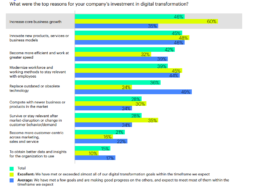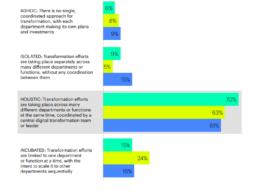
Kieran Murphy
President and CEO at GE Healthcare
Published on June 24, 2021
COVID-19 has changed healthcare forever.
Leaders across our industry responded by rapidly adopting technologies to address health inequities, increase efficiencies, and improve patient outcomes.
In the future, historians will recognize this time as an inflection point.
I discussed this shift with my GE Healthcare colleagues Amit Phadnis, chief digital officer, and David Seda, chief marketing officer for digital, during a recent Reuters event on digital health.
We explored how innovations such as
- the virtualization of care,
- the convergence of clinical medicine and data science, and
- enterprise-wide surveillance
offer incredible opportunities to improve patient outcomes.
1.Virtual Care Scales Resources, Expands Access
Patients wanted convenience and expediency before COVID-19, but the pandemic heightened expectations. Along the way, we saw how virtual care can meet these needs and help clinicians and health systems, too.
Among virtual care’s most valuable benefits are its abilities to boost efficiency and scale resources.
GE Healthcare set up a tele-ICU in India, for example, which connected 800 beds and enabled remote monitoring of critically ill patients nationwide.
Thanks to that innovation, the chief intensivist went
- from managing 10 to 15 patients a day
- to as many as 100
— a model that could help clinics reach patients in other developing markets worldwide.
Remote patient monitoring empowered clinicians to send some patients home,
- which aided their recovery from COVID-19 and
- allowed hospitals to devote more resources to sicker patients.
Clinicians and patients saw that the technology met their needs,
while the enterprise benefited from reduced hospital stays ensuring the necessary capacity.
2.Clinical Medicine, Data Science Serve Outcomes
The volume of data that supports the world’s medical knowledge doubles every 73 days.
At the same time, 97 percent of the data collected in hospitals and clinics is never used, and the information we do tap is historical rather than real-time.
We simply have too much data to mine.
Analytics and AI are the solutions that will ease data overload and drive better outcomes. In 300 hospitals worldwide, GE Healthcare Command Centers gather data from IT systems and devices, which then undergoes analysis by as many as 38 AI applications.
The insights enable our customers to predict what’s coming next and to respond before it happens.
As clinicians look for ways to increase productivity, decrease burnout, and improve the patient experience,
on-device AI promises to deliver real-time insights when, where, and how they need it.
- We have an MR feature that cuts scan times while improving image sharpness,
- an X-ray solution that analyzes images to provide an accurate and automated measurement of endotracheal tube placement within seconds, and
- a point-of care ultrasound system that automatically highlights and counts B-lines in the lung, a telltale sign of COVID-19.
These intelligent devices all seamlessly integrate into clinician workflows.
Clinicians and executives tell us they want evidence-based technologies that support stronger outcomes. AI delivers.
3.Enterprise-wide Surveillance Gains Efficiencies
Throughout the pandemic, health systems achieved these goals through
- enterprise and
- network-wide surveillance.
As deaths increased, resources such as clinician time and medical devices became scarce.
GE Healthcare quickly deployed a new application that uses AI to enable hospitals to see the real-time, statewide status of every COVID-19 patient and resource and predict which challenge might come next.
That’s critical because the upstream impacts of departmental deficiencies are much greater as hospitals near capacity.
Through enterprise-wide surveillance, health systems ultimately regain control over their operations.
At GE Healthcare, we’ve never been more optimistic about the future of healthcare.
We’re on the cusp of some incredible developments in digitally driven care, which stand to help patients and clinicians while optimizing the entire healthcare system.
We have the opportunity to give the historians of tomorrow something to marvel at.
Originally published at https://www.linkedin.com.












